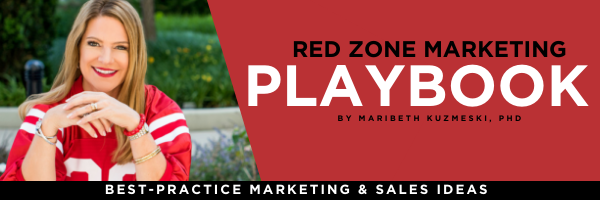When it comes to financial advisor marketing, the time to move from “all business” and “just the facts” has come and gone. Today, people want to feel a more personal connection to the brands they engage with, even in the financial space. Statistics and reports and risk analyses all have their place, but if you don’t tap into the power of personalization in your marketing messages, your prospective clients may end up going elsewhere. Here’s a quick breakdown of some ways you can use personalization to build relationships and boost your marketing efforts.
Where to Personalize Your Financial Advisor Marketing
First, it’s a good idea to outline where you’d want to use personalization. This will largely be dictated by your personal marketing strategy. Are you hosting a podcast? Sending a weekly email? Posting to social media every day? These are all spaces where you (and/or the other members of your advisory team) can be front and center.
But don’t neglect your website and third-party profiles, either. One technique that really helps put a “stamp” of personalization on your marketing can be in the team bios. If you’re a solo advisor, I highly recommend using the first person in your bio. If you’re a team, be sure to include some personal details about each team member after the obligatory roles, education, and experience details.
Blogs are also a great way to share some personal details. Consider doing a series on topics like “How I Became a Financial Advisor” or “Money Lessons Learned from Mom.” You can post each team member separately or do a round robin style post. The possibilities are endless, but one thing is for sure—clients and prospects alike love personalized messaging woven throughout your online presence.
Ways to Personalize Your Marketing WITHOUT Being “Too Personal”
There are several ways that financial advisors can create a more personalized experience in their marketing without being “too personal.” Authenticity is great, but you don’t want to border on oversharing. The idea is to create a nice, healthy crossover from business to personal.
One way to accomplish this is to list awards you may have won and conferences you’ve attended or detail your charity participation on social media platforms. This kind of information will let people know that you’re more than just a company that’s going to advise them on their finances and there are real humans on the other end.
Tell Stories
Regardless of what type of personalization you use, storytelling is a great way to personalize your marketing efforts even further to help build relationships and boost engagement. Since humans have been able to communicate, telling stories has been a way to pass down information and get across a particular point of view in the most engaging way possible.
And just because the financial industry may not always lend itself to a storytelling model, you can still use real-life examples, anecdotes, or case studies to add a human touch to your content so readers will have an easier time identifying and relating with what you’re trying to say.
Pro Tip: Make sure you’re using case studies and testimonials at the right stages of your sales funnel. What you say—and when and where and how you say it—are just as important as any other part of your marketing strategy.
Let’s Get Personal
By embracing personalization, telling compelling stories, and maintaining a balance between business and personal, advisors can build strong relationships with their audience and thrive in the evolving landscape of financial advisor marketing.
Maribeth Kuzmeski, PhD, President of Red Zone Marketing, is a marketing strategist, advisor to financial services companies, bestselling author of seven books, and a professional speaker rated as a Top 25 C-Suite Speaker as seen in Meetings & Conventions Magazine. She speaks on topics including marketing, branding, sales, and customer service.
Recent Articles:
Money Makes People Unhappy, but Financial Advisors Turn that Around
Using Your Name, Image, and Likeness to Differentiate as a Financial Advisor



